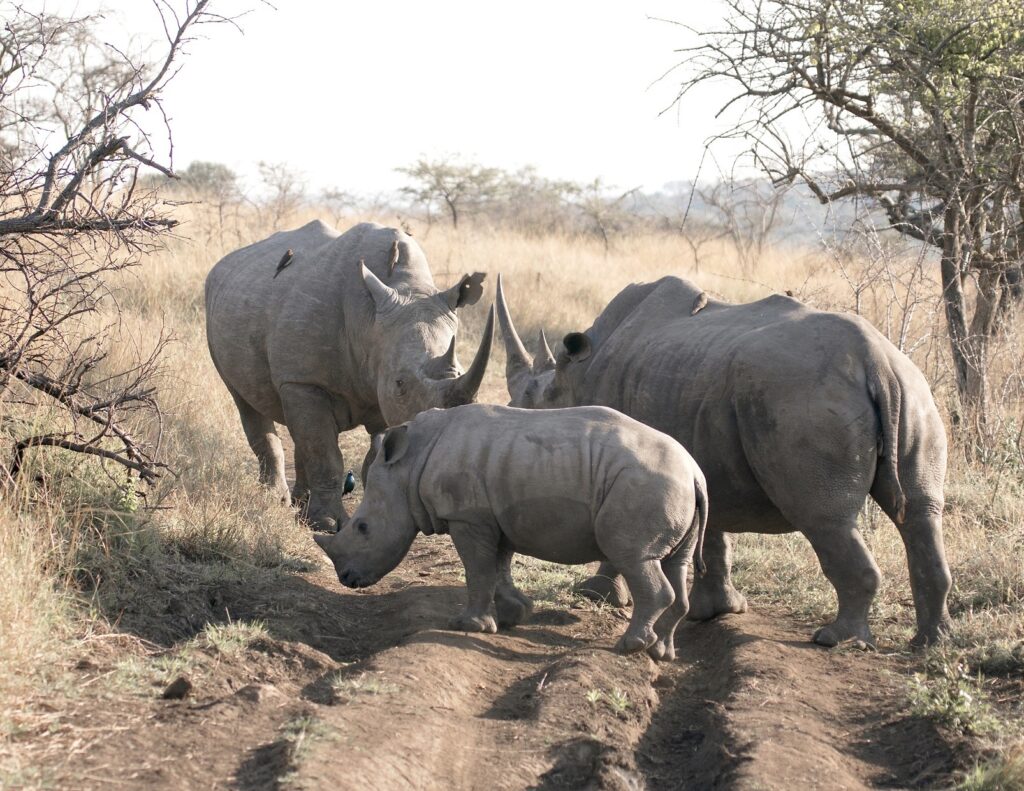 There are now only six northern white rhinos left in the world. In October, a 34-year-old northern white rhino named Suni was found dead in Kenya’s Ol Pejeta Conservancy. He was one of two breeding males left.
There are now only six northern white rhinos left in the world. In October, a 34-year-old northern white rhino named Suni was found dead in Kenya’s Ol Pejeta Conservancy. He was one of two breeding males left.Although Suni died of natural causes, thousands of other rhinos have become victims of poaching. Rhino horns, used for ornamental and medicinal purposes in some Asian countries, are worth more per ounce than gold. “The species now stands at the brink of complete extinction,” the conservancy said in a statement, “a sorry testament to the greed of the human race.”
But the plight of the rhino defies such a tidy narrative. Consider the southern white rhino. In 1900, southern white rhinos were also on the brink of extinction. Only 20 survived on a reserve in South Africa. Yet today, the species is thriving. South Africa is home to more than 18,000, making them the most common rhino on the planet.
Why did the southern white rhino flourish while others perished? It’s an important question as the international community grapples with a surge in demand for rhino horn, ivory, and other wildlife products. Poachers killed a record number of rhinos last year, and the latest data suggest that elephants are being killed faster than they can reproduce. The success of white rhinos in South Africa may provide lessons for how to reverse wildlife declines elsewhere.
In our cover story, Michael ‘t Sas-Rolfes explores the war on wildlife trade and offers insights from his recent research at PERC. His essay describes how South Africa established strong market-oriented institutions that enable people living near wild animals to benefit from them—even through legal trade and trophy hunting.
But South Africa is the exception. Elsewhere, endangered species policy follows a top-down, prohibitionist approach. Kenya, for example, forbids conservation for economic gain and banned all hunting in the 1970s. Since then, its populations of large wild animals have declined by 70 percent.
The top-down approach is taking hold in the international conservation community, but it fails to address the ultimate cause of the poaching problem. The real issue, ‘t Sas-Rolfes concludes, is the underlying property rights and the incentives they create for wildlife conservation.
This special issue of PERC Reports is dedicated to PERC’s Lone Mountain Fellows, whose research is advancing the frontiers of free market environmentalism. Over the years, PERC has hosted 87 Lone Mountain Fellows from a variety of fields. We are proud to feature the work of several recent fellows here—and by doing so, provide a glimpse into the vibrant community of scholars that gather each year to share, evaluate, and refine their research ideas at PERC.
Update: On December 15, 2014, Angalifu, a 44-year-old male northern white rhino, died at the San Diego Zoo Safari Park. There are now only five northern white rhinos left in the world.



